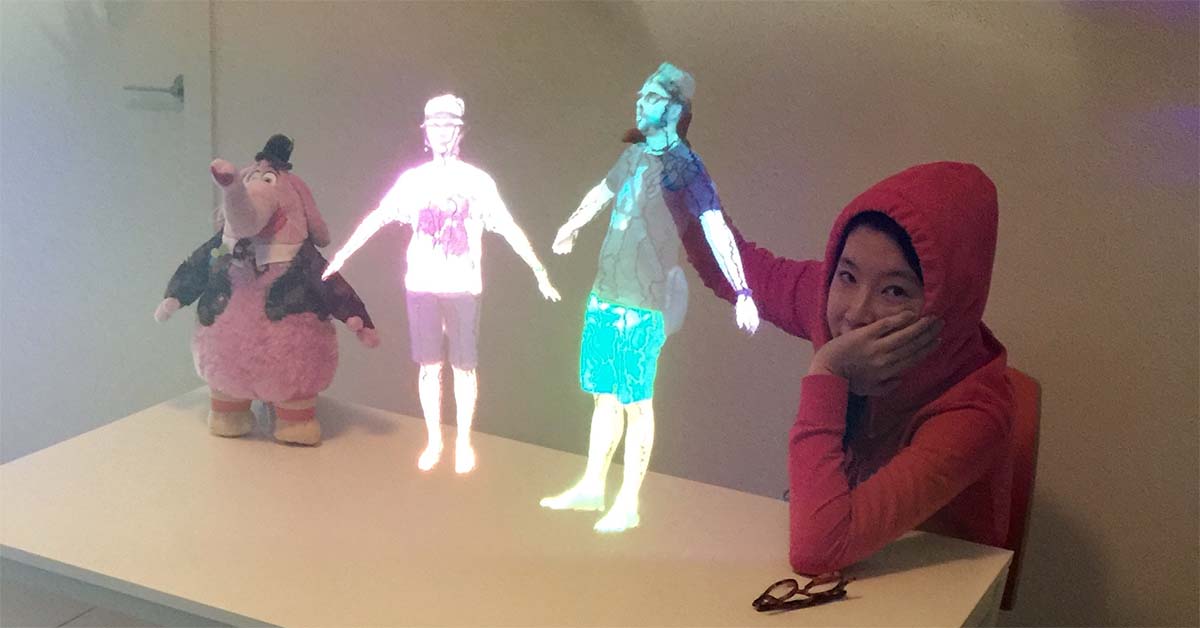Augmented Reality - the Future is now
Tomasz Bednarz on January 30, 2017
Augmented Reality (AR) provides a digital enhancement for the physical world combing virtual objects with the real environment in a way that if the view changes (what user sees), the augmented objects follow that change accordingly. AR systems use lots of complex computer vision algorithms, explicitly scanning surrounding environment and/or constantly seeking for digital markers (bar codes, images, or other patterns) that help to align virtual objects to proper position and orientation in the physical world. All of those combined with AI engines, (Big) Data Analytics platforms, Internet of Things (IoT), distributed storage and virtual laboratories open up indefinite number of amazing opportunities for the AR to make our lives better, be more efficient and improve our decision making strategies.
Some of the AR application areas may include:
-
Translation: travelling to foreign countries are going to be easier, thanks to AR linked with AI systems, especially when a tourist does not know the language. This thought brings me back to 2002, when I moved to Japan to do my PhD at the Kyushu University. Suddenly surrounded by “unknown” kanji characters, it made me feel lost, and worrying about ways of finding my ways through, especially first experience of recognising name of my train station while travelling from academic house to the university. My Japanese colleagues prepared for me a sheet of paper, with characters carefully written on it, and I compared those with every train station banner to match the symbols. With AR, this would be a pleasant experience. The glasses capturing surrounding environment would be able to translate words around live, replacing Japanese written words with English equivalents, exactly in the same spot. I would be also able to avoid situation when being thirsty, I bought can of fruit juice (Chūhai), only finding in the lab from laughing at me students, that it had 8% of alcohol - yes exactly, just could not read Katakana then yet. Also, with the latest release of Google Natural Machine translation system linked with the AR system, the translations universe will be almost perfect. We can also see AR glasses being able to do mouth reads, assisting translations of spoken words in real-time. Such system would work well for travellers, but also visually impaired individuals. Agriculture and Smart Farms: imagine being a Farmer, who wakes up every day, and while having morning coffee time can see the topology of acres of his/her farm displayed above his/her kitchen table as an AR hologram. He/she can see the heat map visualisation overlays representing sensor readings that monitor health of crops, moisture of the soil, enhanced by weather data coming from Bureau of Meteorology. He/she can automate watering of the plants with just a simple hand gesture or a swipe, and apply fertilizer where soil seems to be starved, but also inspect situation more accurately by sending there drones equipped with additional sensors (lab drones), all before his/her days starts, allowing him to save time to grow other aspects of his Ag business in the mid-time.
-
Cultural Heritage: digitising collections is gaining lots of interest from cultural heritage custodians. They not only want to preserve the important aspects of cultural heritage, but also share the information content with researchers, local community, and the world. Using digital forms, it is now possible to show the most fragile artefacts that under any circumstances would be able to leave super controlled storage environments of certain temperature, light, and humidity. Curated AR exhibitions can travel the world, with stories attached to each visualisation, additionally allowing audience to interact with digital reconstructions, often enhancing cultural and historical understandings by including a community-targeted feedback loops (citizen science) components.
-
Conservation: AR technology started to be successfully employed in the biodiversity conservation sciences. There are many endangered animals in this world and it is certainly critical and compelling to preserve ecosystems for them. We can see lots of programs worldwide that started using technology such VR or AR to educate society about existing issues, or to elicit information about habitats of endangered animals from local tribes or conservation experts. Especially, the latter provides data to build up geo-statistical models that indicate which particular areas need a special protection, or how to build ecological tunnels to move animals from one part of forest to another. AR is a natural extension of those efforts, especially for data collectors traveling through the jungle, as data can be displayed in the front of their eyes, showing their location (map), what species they see or hear around (automatic notification from deep learning engines), and marking those places in a special way that construct evidence base to enhance computational models.
-
Visual Analytics Platforms: imagine being inside your data visualised in the physical space of your current location. You are able to interact with your (big) data and draw new conclusions beyond what was known up to that moment. You are able to trigger additional real-time re-computations on the models, and get dynamic feedback inside your field of view, being able to ask new questions, gain new understandings to make better informed decisions. Visual Analytics can be used across many scientific and industrial domains, connecting Big Data Analytics with Visualization capabilities. Complex data sets can be explored in new exciting ways to reveal new insights, and multi-dimensional relationships. Platforms can also link with other image modalities such as VR, interactive walls, hemispherical screens, and display same data across ten or twenty AR devices in same session, allowing new collaborative interactions - new way of doing business or science.
Those are just few examples where AR creates new opportunities. The Future is now.